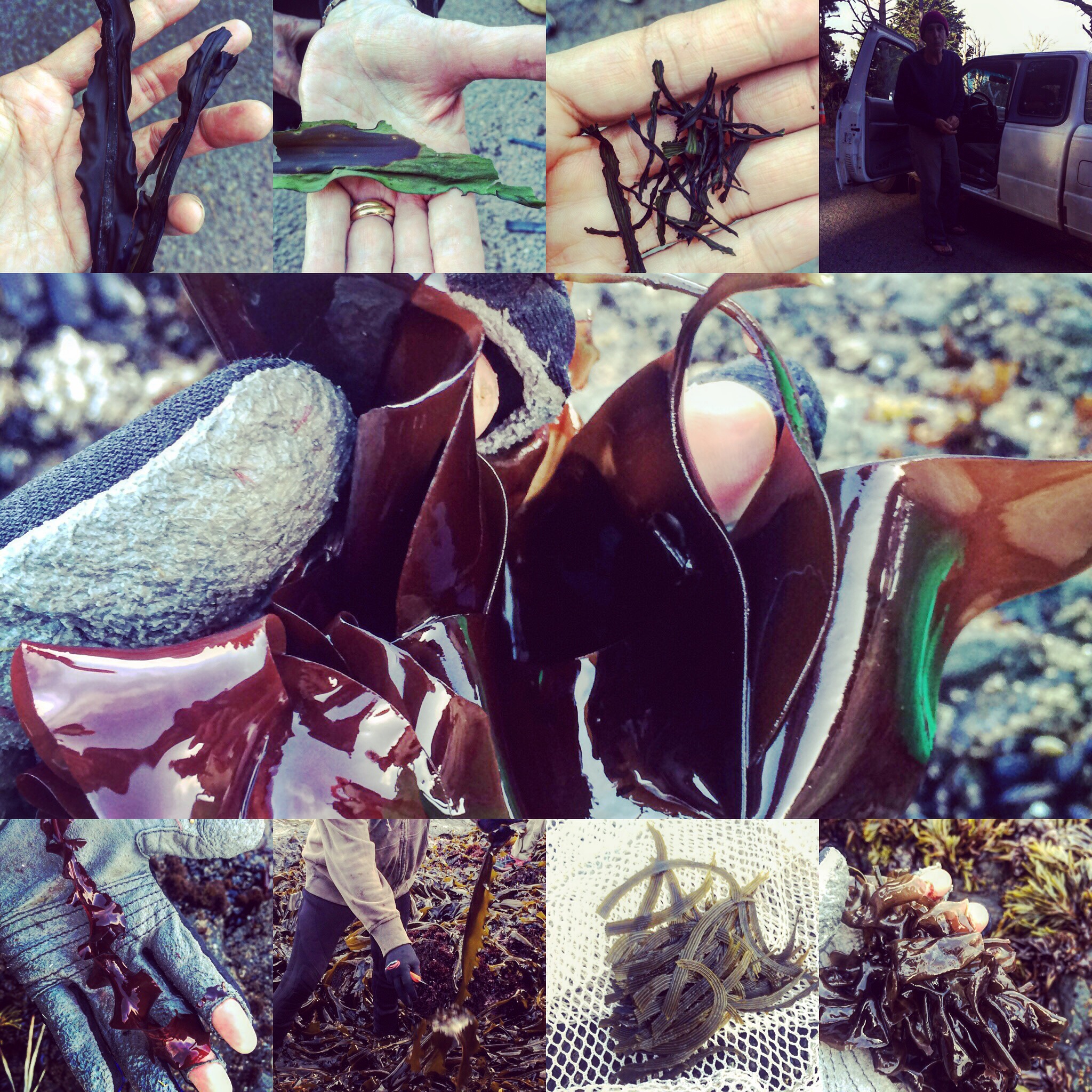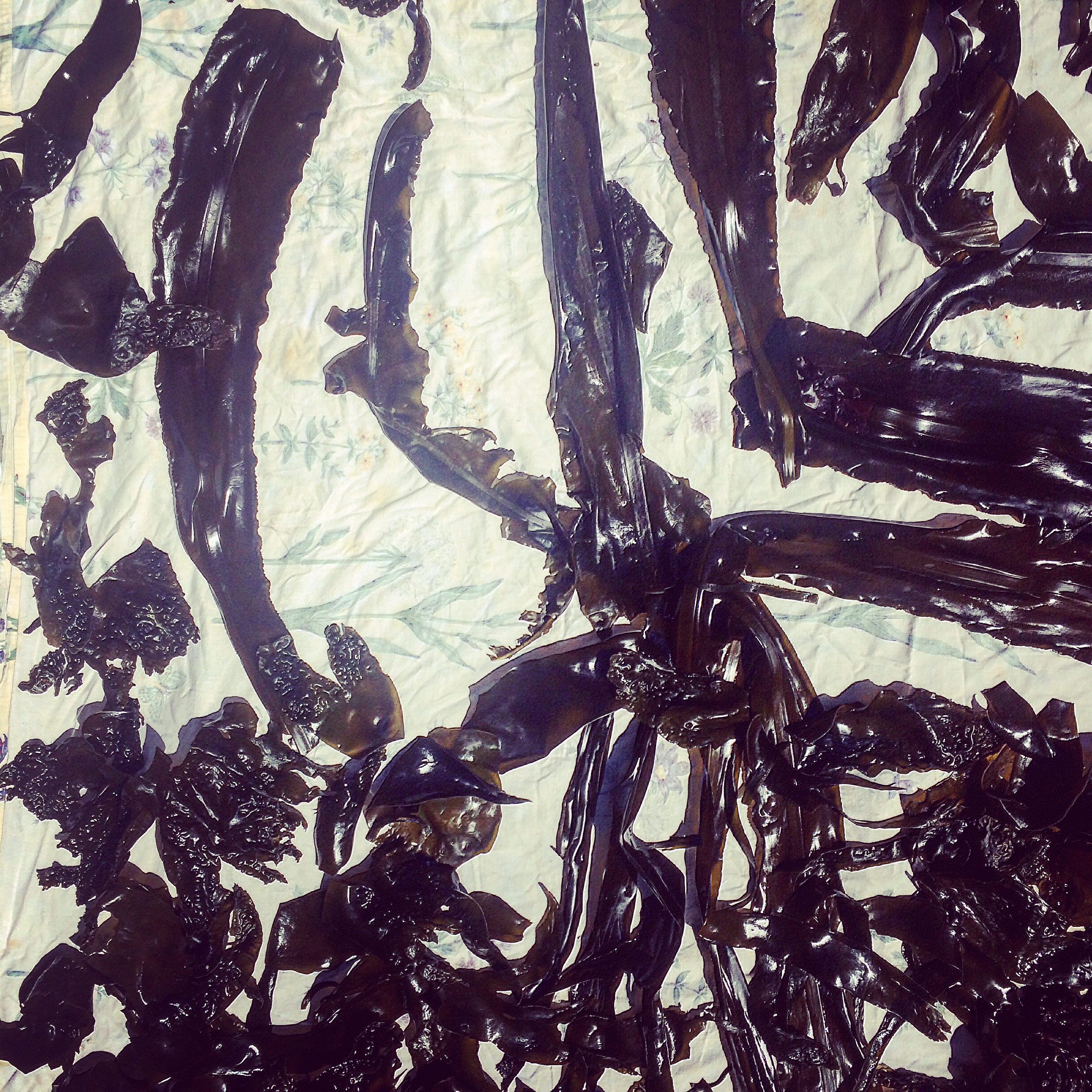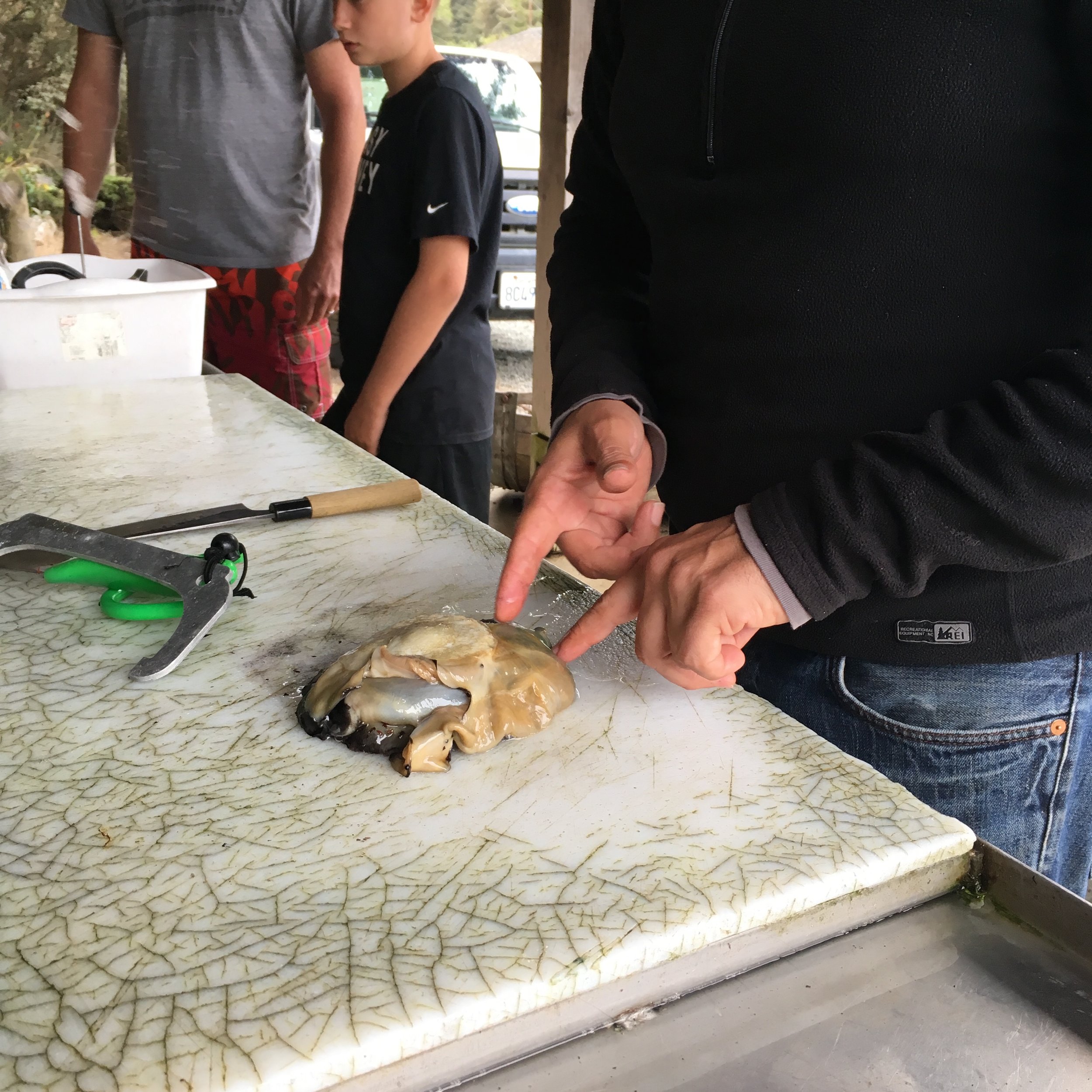The Sea Foragers Guide to Northern California, by Kirk Lombard: Heyday Press, Berkeley, CA
I consider myself a hunter and gatherer and one who loves to forage for my food. I take ridiculously long drives when I hear of a chance to find morels or porcinis sometimes with people I’ve never met before. There is no guarantee of finding those elusive organisms once you arrive either. I free dive in the rough shallows of the ocean to find abalone and sea urchin (yum!). I pick nuts of the California Bay Laurel and Oak trees dodging poison oak competing with the squirrels. In the past six years I have found a new love for edible wild plants as well as dye plants, mushrooms and lichen. I am no expert but I hope someday to be one. Last month I took a mini class on collecting seaweed at low tide. I drove to Mendocino and arrived at my campground at 1 am. It was the first time I camped alone. I dragged my futon the back of the car and slept that night in a real bed albeit in the back of a Volkswagen. Early the next morning I stopped in town for a coffee at 6:30 am and headed to a predestined spot to meet the seaweed expert. She opened a new world for me. It's good day when I find a new thing to munch on like salty seaweed or can sustainably gather my ten allotted pounds of various algae species. Then the seaweed master took the day to a new height, she showed me how to collect salt. That new skill put a smile on my face for the rest of the day. It was only 10 am.
“ Don’t forget to stop at the cannabis farmers market,” she said as she hopped in her car to head home.
So the smile continued once I met the passionate farmers of the‘flowers”. A flower refers to the "buds" now an anachronistic word from text and language of the last century. The market was revelatory, exciting and almost as good as foraging for my own food. I love farmer's markets and this was new kind of market. I couldn’t wait to tell my friends.
A perfect day in California involves the forage of fish, seaweed, mushrooms, plants, snails, sea urchins, salt and now, flowers.
So when I got an email to review The Sea Foragers Guide to Northern California, by Kirk Lombard, I literally took the bait.
With the experience sea foraging fresh in my memory, reading the book was a true pleasure. It even added a new favorite word to my lexicon: the piscivore. I have decided not to use pescatarian in my kitchen anymore.
Lombard’s book is a perfect combination of playful and funny storytelling through his own experiences and sharing essential knowledge of gearing up, finding, catching and cooking sea creatures that are at our marine doorstep. And while I turned to the pages to my favorite fish of sardines and anchovies, and learned a little more, the prospect adding more creatures and techniques to my foraging and cooking schedule was a gift. Why not add a few limpets to my belt? (Because they are tough and chewy).
The book tells a harrowing story of his first abalone dive that combines all the fears and I have ever had before venturing into the water. Think Great White, think drowning. Lombard also gives the reader an option: do you pick everything you can possibly find or do take into consideration your own morals and restraints? Do you want to kill an octopus really? It’s my favorite thing to eat in Spain, yes, but the fact that their intelligence is comparable to humans might make you think twice. And that is what Lombard does really well, he helps question the motives before the catch and at the same time he tells you all the basic knowledge you need to know in your own quest to find seafood in Northern California. This is a book for locals that want to venture out of normal fishing bounds and start to explore one of the richest and abundant ecosystems of the world. No worries if you only want to read about salmon and halibut but if you buy this book it’s because you want to learn much more. For a non-fisherwoman like me, the “how to” of gear, lines, nets, skinners and rigs (delightfully illustrated by Leighton Kelly) was well beyond my knowledge. I now know the terms. That's a start. Now I even know the basics of fishing from a kayak. How exciting!
In all, The Sea Foragers Guide to Northern California is a perfect reference book for any friend or family who wants to start an informed and thoughtful foraging and fishing practice in Northern California. It’s a very Northern Californian book of which I appreciate (because I live here and love it). So go to the beach and get your fresh Bullwhip kelp ready to pickle. I know I am.





















